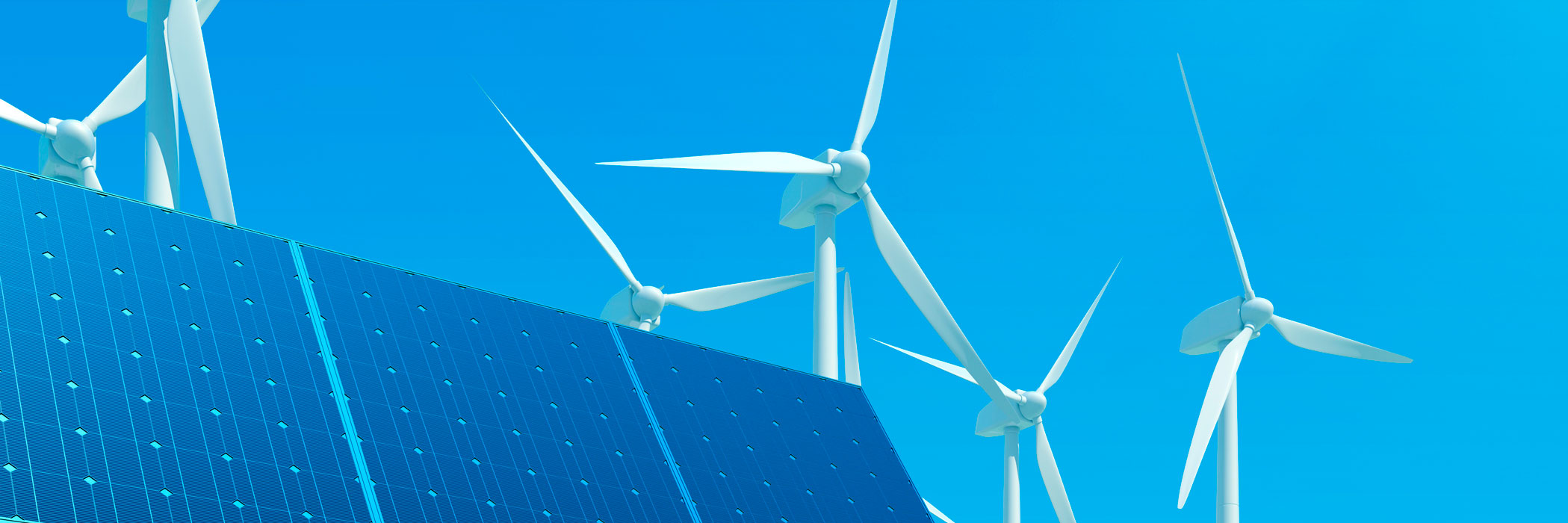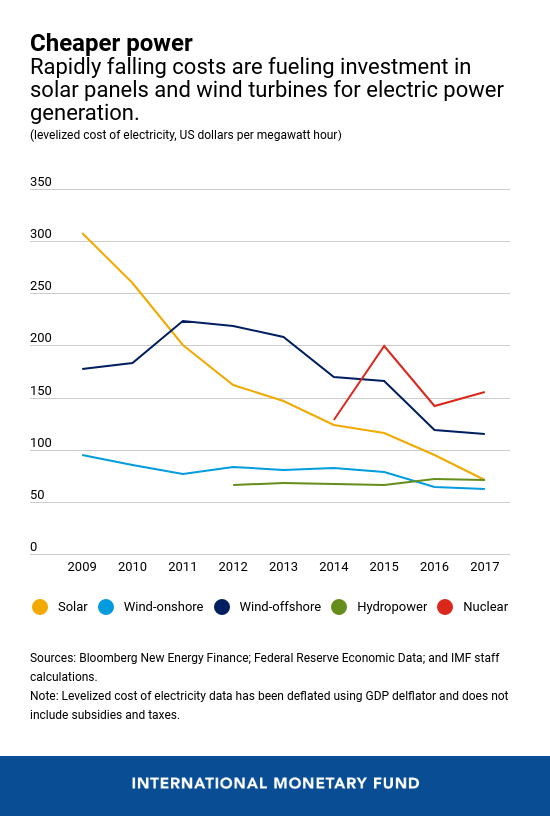Harnessing wind and solar energy for low-carbon electric power generation was once considered uneconomical. Now, rapidly falling costs for these technologies are boosting global renewable energy capacity. Renewable energy sources can help reduce carbon emissions substantially and the effects of global warming.
As the Chart of the Week from the April World Economic Outlook shows, solar and onshore wind turbines saw the biggest price declines among low-carbon energy sources between 2009 and 2017. Prices dropped 76 percent for solar panels and 34 percent for turbines during that time, making them competitive alternatives to fossil fuels and more traditional low-carbon energy sources such as hydropower and nuclear.
The numbers are based on the so-called levelized cost of electricity, a method of calculating the cost per unit of power that would be needed to recover the investment in building and operating different generating technologies.
Global investment in renewable energy capacity has accelerated in the past decade, as wind and solar have emerged as cost-effective power sources. While hydropower attracted the most investment in renewable energy up to 2008, wind turbines took the lead in 2009, and solar panels became the dominant investment choice by 2016. In 2017, more was invested in solar than in all other low-carbon technologies combined.
Solar and onshore wind turbines saw the biggest price declines among low-carbon energy sources between 2009 and 2017.
While the cost of wind and solar power generation declined, nuclear and hydropower costs rose 21 percent and 9 percent, respectively, during the same period. Unlike wind and solar power, nuclear and hydro are mature technologies that require large investment in structures with low standardization, similar to other large-scale civil engineering projects such as bridges and railroads. These factors tend to limit the potential for cost reduction for these kinds of projects.
In contrast, research and development in solar and wind technologies, their standardization, and economies of scale in manufacturing have resulted in increasingly efficient solar panels and larger wind turbines.
While predictions are difficult, the experience with wind and solar technologies may suggest a similar path for the cost of producing electric batteries, whose production could become significantly more efficient with standardization and economies of scale.







